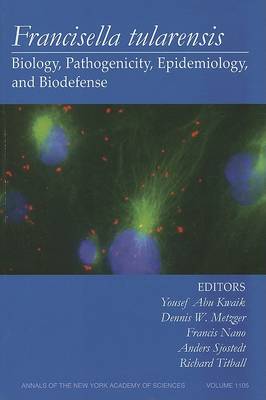Annals of the New York Academy of Sciences
1 total work
Francisella Tularensis
Published 19 December 2007
This is the first book on tularemia. With the biodefense initiative, there has been a major boost by the NIH to fund studies on bioterrorism agents, including Francisella, which is classified as a A bioterrorism agent. With the major interest in biodefense and the major threats of bioterrorism, Francisella tularensis has become a major interest for microbiologists, cell biologists, immunologists, and infectious disease experts. The volume explores the mechanisms of pathogenesis, genetics and genetic manipulations, genomics and metagenomics, identification of vaccine candidates, animal models to study the disease process, mechanisms of protective immunity, pathophysiology, vaccine development, genetic susceptibility, more effective therapies, clinical diagnosis, and routine and rapid microbiological diagnostic tools.
NOTE: Annals volumes are available for sale as individual books or as a journal. For information on institutional journal subscriptions, please visit www.blackwellpublishing.com/nyas.
ACADEMY MEMBERS: Please contact the New York Academy of Sciences directly to place your order (www.nyas.org). Members of the New York Academy of Science receive full-text access to the Annals online and discounts on print volumes. Please visit http://www.nyas.org/MemberCenter/Join.aspx for more information about becoming a member
